Published on: 12/03/2022
Whether you’re training for a specific event like a marathon or just looking for ways to improve your overall fitness, HIIT running workouts can be a great way to add variety. Not only that, but they also offer a range of performance and health benefits.
With a mix of easy and hard running intervals, this workout style packs a big punch into a short amount of time. They’re a great option for time-crunched runners or anyone looking for ways to build speed without spending hours working out. Keep reading for all the reasons you should consider adding high-intensity interval training to your running plan.
What is HIIT Running?
If you’re unfamiliar with the term, HIIT stands for high-intensity interval training. It’s common for runners to use interval workouts to build speed and fitness. A HIIT running workout is one variation in which you run hard in short bursts with a brief rest in between.
What’s considered a hard effort? Generally, it’s about 80% of your maximum. In other words, not your all-out best effort, but enough that you’re breathing too hard to talk. It should feel difficult to maintain the intensity for longer than the prescribed interval.

HIIT is slightly different from a Tabata workout. Tabata is a specific type of HIIT that consists of 8 rounds of 20 seconds of work with 10 seconds of rest for a total of 4 minutes. But HIIT sessions can have varying lengths of work and rest periods.
Sprint interval training (SIT) is another HIIT variation. It consists of work intervals at your maximum effort. As a result, the run periods are much shorter, and the recovery is a bit longer.
Keep in mind that even though this article is focused specifically on running, you can use the HIIT formula for just about any type of cardio or bodyweight exercises, such as burpees or a spin class.
Benefits of HIIT Running
Efficient use of time
Let’s face it: we’re all busy. And unless you’re a professional runner, you probably have other priorities in your life, like work and family, that can sometimes get in the way of your training. But with running HIIT workouts, you can get a ton of benefits in a short amount of time.

In fact, you can use HIIT to get in an effective workout in as little as 20 or 30 minutes, depending on the format you choose. That’s something anyone who’s had to squeeze in a run on their lunch break can appreciate.
Increase speed
If you want to run faster, consider adding high-intensity interval sessions to your training plan.
When you want to increase your running speed, your natural instinct may be to simply do all of your runs at a faster pace. Unfortunately, that’s easier said than done. If you’ve ever tried to run at a faster pace than you’re used to, you’ve probably noticed that the longer you go, the harder it is to hold the pace.
In other words, it’s easier to run fast for 30 seconds than it is to hold the same pace for 3 minutes. That’s why adding HIIT workouts into your exercise program can help your body adapt to running at a faster pace.

This type of interval training has been shown to help increase power and endurance, which results in a faster pace: According to a 2017 study (1), triathletes who followed a low-volume, higher-intensity training plan improved their speed and athletic performance more than those who followed a high-volume, lower intensity workout plan.
And since you pace yourself based on perceived effort, everyone from novice to advanced runners can benefit from this type of interval training. So if you’re chasing your next PR, don’t overlook the benefits of a great HIIT workout.
Improve stamina
Running faster is great, but maintaining that speed is just as important, if not more so. Have you ever trained for a new distance and found your pace lagging as your mileage increased? That’s where running stamina comes in.

Studies show (1) HIIT running workouts help improve your power and economy, which increases your ability to run longer at a faster pace. And better running stamina is something we can all appreciate, especially when training for a longer race like a marathon.
Better glycogen usage
There are also multiple health benefits to regularly completing a running HIIT workout.
According to a 2008 study (2), researchers found that HIIT exercises can improve the body’s ability to process glycogen to fuel our muscles. The same study found that the body was better able to oxidize fat and carbohydrate after doing HIIT for 6 weeks.
Working out at an intense effort puts your body into an anaerobic state, which increases its ability to break down glucose into energy. This process is called glycolysis (3).
Better glycogen use results in less fat storage in our bodies (4). This is important for anyone looking to achieve fat loss or weight loss through running.

Improve energy production
Similarly, running at a higher intensity level has been shown (5) to increase your body’s level of adenosine triphosphate (ATP). This is our muscles’ main source of energy, so increasing it will help you run faster or longer.
Bonus: the benefits will carry over to future workouts, too!
Lose weight
If you want to lose fat, adding HIIT running workouts to your training plan is a great way to reduce body fat and help with weight loss.
Studies have shown (6) you’ll burn more calories when running at higher intensity intervals than you would be doing cardio at a steady pace. In fact, researchers found that HIIT burned a “significantly higher” number of calories than lifting weights or doing endurance cardio training.

Additionally, it’s been shown (7) that your metabolism increases more after a HIIT running workout than after running at a slower pace. This is the “afterburn” effect you may have heard commonly associated with weight lifting.
Studies have shown (8) that a HIIT workout can increase excess post-exercise oxygen consumption (EPOC) as your body repairs itself from the stress of the workout.
What does all of this mean? Essentially, you’ll continue burning more calories after a HIIT workout than you would after a long, slow run. Keep that in mind as you’re planning your exercise program.
Run more efficiently
Just as a fuel-efficient car will get more miles per gallon of gas, our bodies can adapt to use oxygen more efficiently while exercising. This is known as VO2 max, which measures how efficiently our bodies use oxygen during the effort.
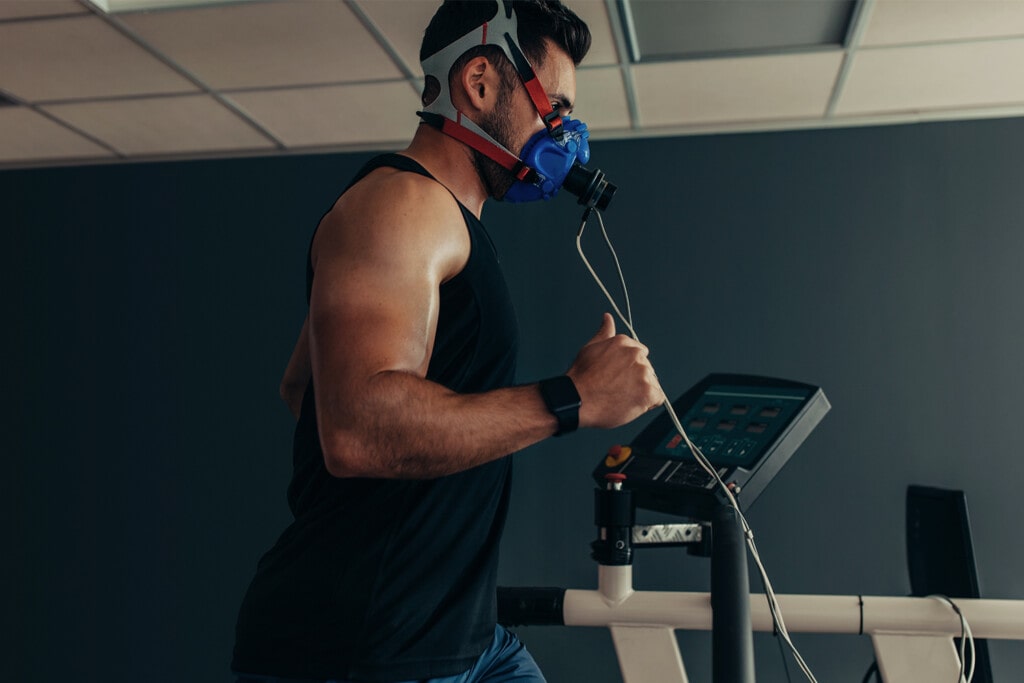
But the way you train matters. Since as far back as 2007, researchers have known (9) that high-intensity interval training is incredibly effective at improving VO2 max. It’s even more beneficial than training at lactate threshold or doing long slow distance (LSD) workouts.
In short, using HIIT and improving your running economy will help you feel better and run longer at a fast pace.
Maintain muscle mass
Although it’s not strength training, HIIT can help preserve your muscles. This is especially important as we age.
For women in perimenopause or menopause, well-known women’s health researcher Dr. Stacy Sims recommends staying active (10) to help build and maintain muscle mass as hormone levels shift. Her suggestions include HIIT workouts and strength training – specifically, lifting heavy weights. According to Dr. Sims, women in this stage need to focus on incorporating short, fast intervals into their workout routine as opposed to doing hours of steady-state cardio.
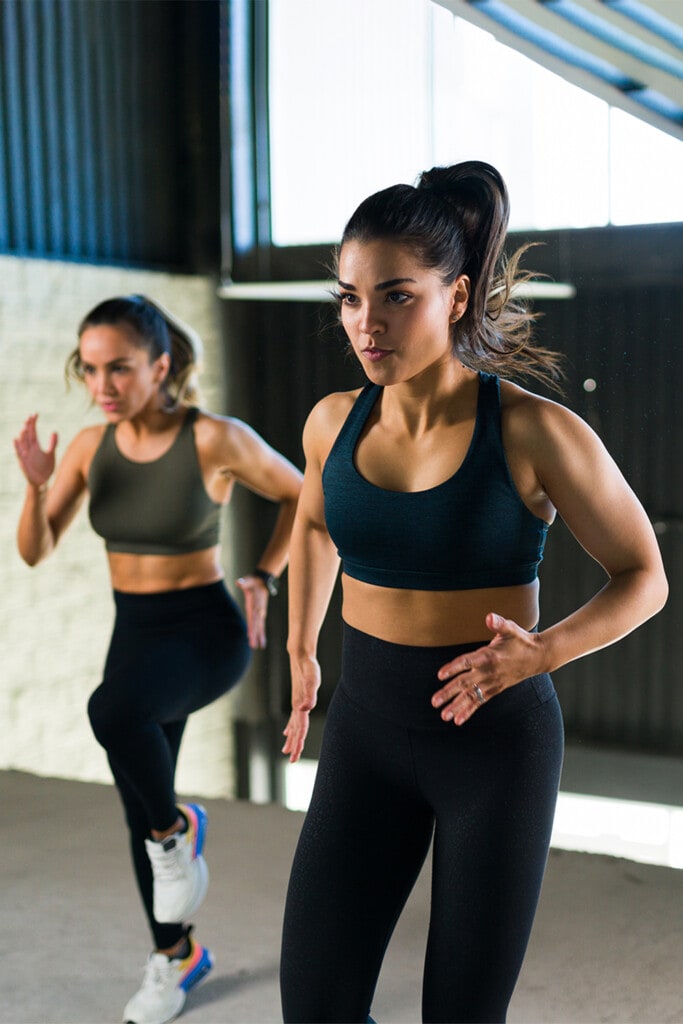
Her recommendations are backed by science: research shows that HIIT can help preserve or maintain lean muscle mass for various participants, including middle-aged men (11) and even chemotherapy patients (12).
Improve aerobic fitness
Researchers have found (13) that polarized training is an efficient way to improve aerobic capacity. And a 2015 study (14) showed that hockey players performed better after just 4 weeks of HIIT than their teammates who did continuous-effort training.
Running is a stress on the body, and research has shown (15) that we become faster, stronger runners by adapting to this stress. In a HIIT workout, your body is learning to adapt to short periods of work during a short rest period.
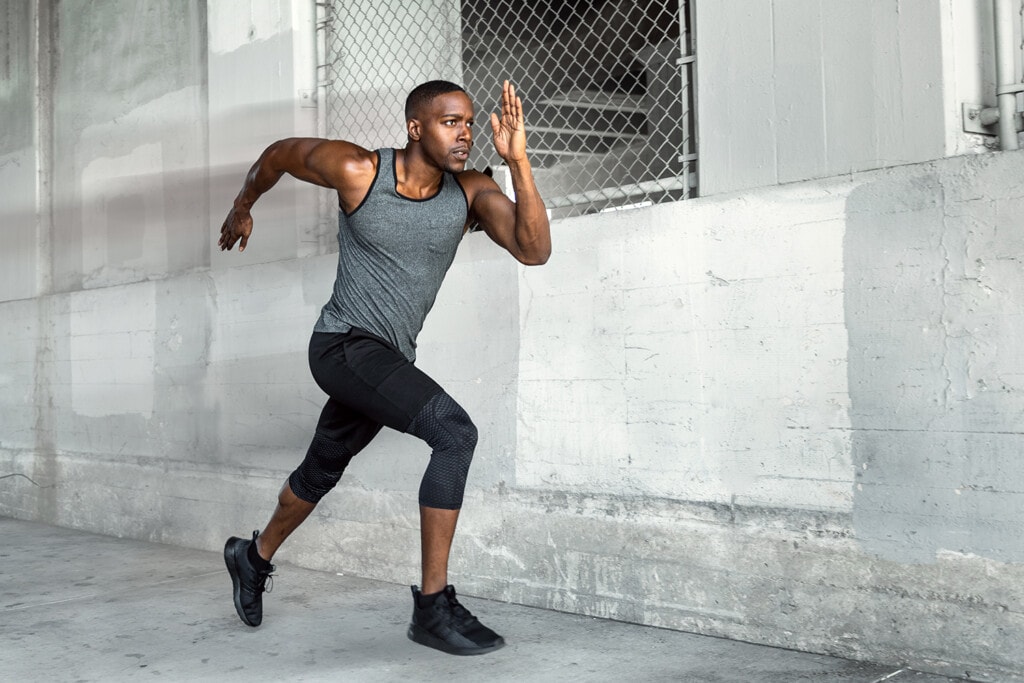
But too often, runners make the mistake of staying in the “gray zone” – running too hard to be considered easy but too easy to be considered hard. To ensure you get the maximum benefit from HIIT running, consider investing in a fitness watch or heart rate monitor.
Or, be diligent about monitoring your rate of perceived exertion (RPE) to make sure there’s a clear difference between your work intervals and your rest intervals.
Lower blood pressure
There have been multiple studies (16) showing that, over time, HIIT can reduce blood pressure for adults with high blood pressure. In fact, a 2020 study (17) found that improvements can be made with as little as six weeks of training.

And some researchers have found that it takes less workout time to achieve these benefits with HIIT than with traditional steady-state running. For example, a 2016 study (18) showed that blood pressure decreased over an 8-week period with just three 20-minute sessions per week. In comparison, it took the steady-state endurance training group four 30-minute sessions per week to achieve the same results.
In short, HIIT can help lower blood pressure with less workout time than you’d need from steady-pace running. That’s great news for anyone with a busy schedule.
Reduce blood sugar
It’s no secret that obesity and age are risk factors for type 2 diabetes. But the way you train can help offset those risks.
There have been a number of studies over the years showing the benefits of HIIT for those at risk for type 2 diabetes. Compared to traditional steady-pace cardio, HIIT has been shown (19) to be better at both improving insulin resistance and reducing blood sugar.
HIIT has also been shown (20) to improve blood sugar for those who are overweight or obese. But there are also benefits for those without diabetes. Research indicates (21) that insulin resistance can be improved better with HIIT than with steady-state cardio.
Who is It for?
Generally, most healthy runners with no injuries or health concerns could benefit from HIIT running. It’s also great for anyone wanting to run faster and more efficiently. Interval training is also a common choice for runners and non-runners alike who want to burn calories, get leaner, or lose weight.
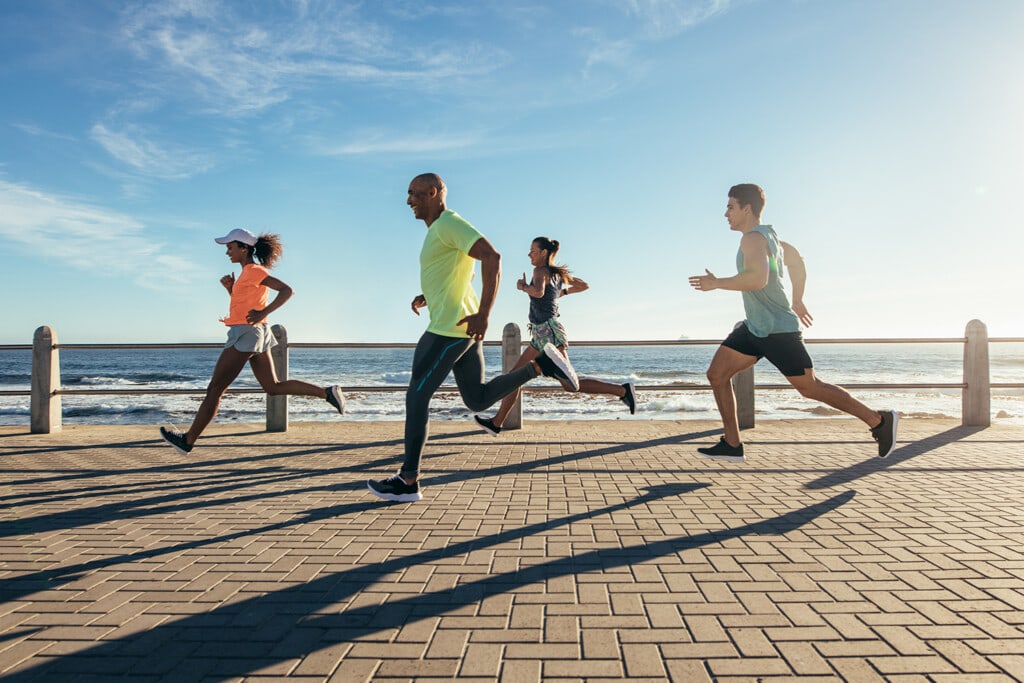
HIIT workouts are also a smart option for anyone with a busy schedule. Because this is high-intensity training, the workouts are incredibly efficient and typically only take 40 minutes or less.
Important Considerations
Remember, HIIT workouts are all about effort, not hitting certain speeds. Your hard intervals may not be the same as your training partners. In fact, the pace for your hard intervals may vary from session to session, and that’s okay.
As stated above, the run intervals of HIIT running workouts are done at a hard effort, so it’s important to give yourself a chance to recover between sessions. Consider taking a rest day, going for an easy run, or doing some type of active recovery the day after a HIIT workout. Whatever type of training you’re doing, just avoid stacking hard workouts back-to-back.

It’s also a good idea to make sure you’re using proper form when running at a harder effort. A run coach or certified personal trainer can watch you run to see if any adjustments are needed. This will help you stay injury-free.
Although interval training can be adapted to any fitness level, be sure to consult with your doctor before doing HIIT runs if you have an injury or health condition.
Similarly, talk to your coach or personal trainer about how to add high-intensity intervals to your training plan if you’ve had issues with overtraining or frequent injuries.
5 Top HIIT Workouts to Reach Your Goals
Whatever your goals, add one or more of these running HIIT workouts to your workout plan to help you reap the many benefits of HIIT training. Or, create your own HIIT running workout by using a timer to keep your fast pace and easy pace intervals consistent. Your recovery periods should get longer as your intensity level gets higher.
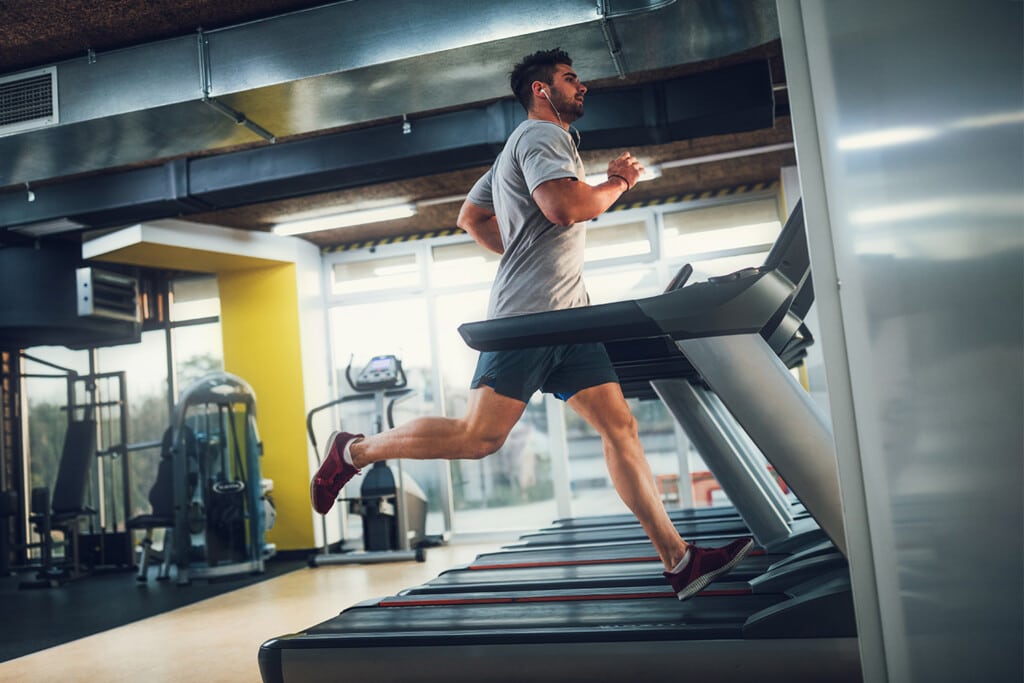
1. Beginners running HIIT workout
Try this interval running workout if you’re a new runner or you’re returning to running after an injury or long break. If you can’t run, then power walk; just make sure your work intervals are faster than the recovery intervals.
- Warm Up: 5-minute brisk walk
- Run Intervals: 60-second run or power walk
- Recovery Intervals: 60-second walk
- Repeat: 5-6 times
- Cool Down: 5-minute brisk walk
2. Short HIIT running workout
This is a good workout for adding interval training to your existing running plan. The shorter intervals will make it easier to run faster on the intense intervals.
- Warm Up: 5-minute light jog
- Run Intervals: 30-second sprint
- Recovery Intervals: 60-second jog
- Repeat: 6 times
- Cool Down: 5-minute jog
3. Strength HIIT workout
Make the most of your time by combining strength training with high-intensity exercise. You’ll get the aerobic benefits of a HIIT session while you build muscle.
- Warm Up: Dynamic stretches plus 10 minutes of easy running
- Do each of the following exercises for 30 seconds, followed by 15 seconds of rest:
- Alternating reverse lunge to front kick (holding dumbbells)
- Sprint or squat jumping jacks
- Jump squat with weights
- Sprint or jumping jacks
- 1-Minute rest
- Repeat: 4 times
- Cool Down: 5-10 minutes of walking or light jogging
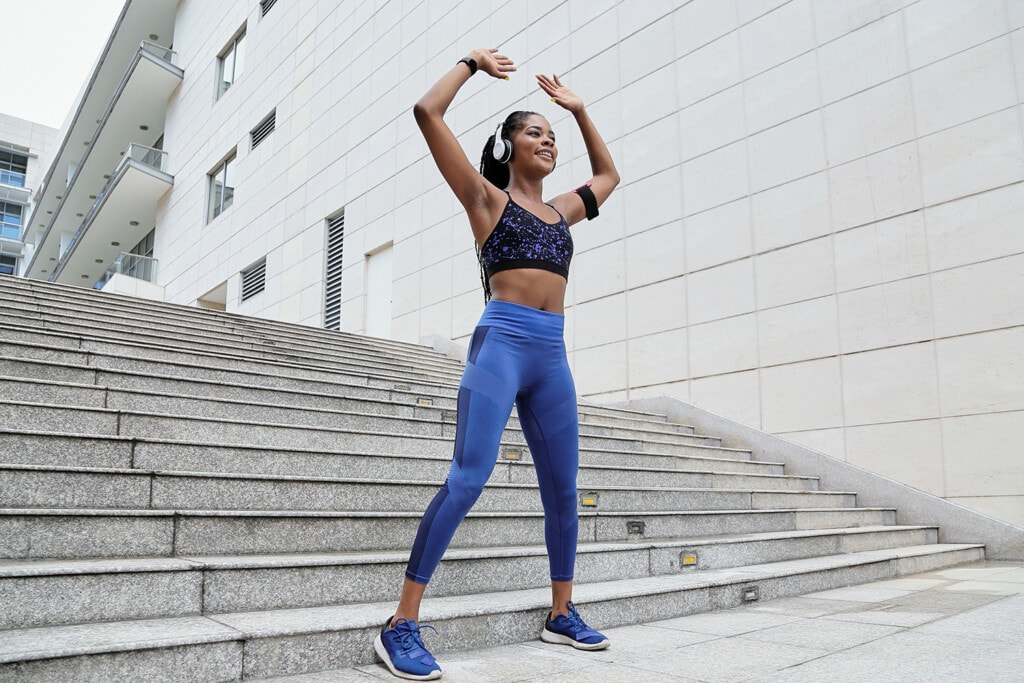
4. HIIT hill repeats
This is a workout you can use to get stronger and faster at running hills. All you need is a short hill or a treadmill that you can set an incline on.
- Warm Up: 5-minute jog or easy run
- Run Intervals: 20-40 seconds sprinting uphill
- Recovery Intervals: walk or jog back down to where you started
- Repeat: 4 times
- Cool Down: 5-10 minute jog or easy run
5. HIIT treadmill workout
You can modify nearly any HIIT running workout to make it work on the treadmill, but if you’re looking for a specific treadmill run, try this:
- Warm Up: 10-minute easy at 0%-1% incline
- Run Intervals: 30 seconds fast at 3%-5% incline
- Recovery Intervals: 30 seconds easy run or walk at 3%-5% incline
- Repeat: do 4-8 sets of run/recovery intervals
- Cool Down: 5-10 minutes easy at 0%-1% incline
It will take a few seconds for the treadmill to speed up and slow down, but that’s okay. You’ll count the total time, which means you’ll only run at your fastest speed for about 25 seconds.
Ready to Try HIIT Running?
Add HIIT training to your running plan this week and start reaping the health and performance benefits. Pick one of the workouts listed here or use the concepts to create your own. You can mix in other cardio exercises like burpees or mountain climbers to keep things interesting.
As you add HIIT workouts into your running plan, remember to alternate hard and easy days so your body can recover. And if you feel unsure about how to start this type of exercise, it’s a good idea to get guidance from a running coach or personal trainer.
Go ahead, get out there and give it a try!
References
A High Intensity Interval Training (HIIT)-Based Running Plan Improves Athletic Performance by Improving Muscle Power
García-Pinillos F et al. (2017)
Journal of Strength and Conditioning Research
https://pubmed.ncbi.nlm.nih.gov/27172268/
High-intensity aerobic interval training increases fat and carbohydrate metabolic capacities in human skeletal muscle
Perry CG et al. (2008)
Appl Physiol Nutr Metab
https://pubmed.ncbi.nlm.nih.gov/19088769/
Biochemistry, Glycolysis
Chaudhry R et al. (2022)
StatPearls Publishing
https://www.ncbi.nlm.nih.gov/books/NBK482303/
Berkeley News (retrieved on 12/01/2022)
https://news.berkeley.edu/2012/12/06/gene-converts-carbs-to-fat/
High-Intensity Interval Training Alters ATP Pathway Flux During Maximal Muscle Contractions in Humans
Larsen RG et al. (2014)
Acta Physiol (Oxf)
https://www.ncbi.nlm.nih.gov/pmc/articles/PMC4043225/
Caloric expenditure of aerobic, resistance, or combined high-intensity interval training using a hydraulic resistance system in healthy men
Falcone PH et al. (2015)
J Strength Cond Res.
https://pubmed.ncbi.nlm.nih.gov/25162652/
The acute effect of exercise modality and nutrition manipulations on post-exercise resting energy expenditure and respiratory exchange ratio in women: a randomized trial
Wingfield HL et al. (2015)
Sports Med Open
https://pubmed.ncbi.nlm.nih.gov/27747847/
Magnitude and duration of excess of post-exercise oxygen consumption between high-intensity interval and moderate-intensity continuous exercise: A systematic review
Panissa VLG et al. (2021)
Obes Rev.
https://pubmed.ncbi.nlm.nih.gov/32656951/
Aerobic high-intensity intervals improve VO2max more than moderate training
Helgerud J et al. (2007)
Med Sci Sports Exerc
https://pubmed.ncbi.nlm.nih.gov/17414804/
Dr. Stacy Sims (retrieved on 12/01/2022)
https://www.drstacysims.com/blog/why-women-need-more-strength-and-less-cardio-training
Skeletal Muscle Adaptive Responses to Different Types of Short-Term Exercise Training and Detraining in Middle-Age Men
Callahan MJ et al. (2021)
Med Sci Sports Exerc
https://pubmed.ncbi.nlm.nih.gov/33867497/
Highly favorable physiological responses to concurrent resistance and HIIT during chemotherapy: the OptiTrain breast cancer trial
Mijwel S et al. (2018)
Breast Cancer Res Treat
https://pubmed.ncbi.nlm.nih.gov/29349712/
HIIT for health benefits and care of cardiac diseases – The key to an efficient exercise protocol
Ito S (2019)
World J Cardiol
https://www.ncbi.nlm.nih.gov/pmc/articles/PMC6763680/
High-intensity interval training has positive effects on performance in ice hockey players
Naimo MA et al. (2015)
Int J Sports Med
https://pubmed.ncbi.nlm.nih.gov/25329432/
Effects of beta-alanine supplementation and high-intensity interval training on endurance performance and body composition in men; a double-blind trial
Smith AE et al. (2009)
J Int Soc Sports Nutr
https://pubmed.ncbi.nlm.nih.gov/19210788/
Effects of high-intensity interval training on cardiometabolic health: a systematic review and meta-analysis of intervention studies
Batacan RB et al. (2017)
British Journal of Sports Medicine
https://bjsm.bmj.com/content/51/6/494
High-intensity interval training for reducing blood pressure: a randomized trial vs. moderate-intensity continuous training in males with overweight or obesity
Clark T et al. (2020)
Hypertens Res
https://pubmed.ncbi.nlm.nih.gov/31937915/
The Effect of Low Volume Interval Training on Resting Blood Pressure in Pre-hypertensive Subjects: A Preliminary Study
Skutnik BC et al. (2016)
Phys Sportsmed
https://pubmed.ncbi.nlm.nih.gov/26918846/
The effects of high-intensity interval training on glucose regulation and insulin resistance: a meta-analysis
Jelleyman C et al. (2015)
Obes Rev
https://pubmed.ncbi.nlm.nih.gov/26481101/
Short-Term HIIT on Body Composition and Blood Glucose in Overweight and Obese Young Women
Kong Z et al. (2016)
J Diabetes Res
https://pubmed.ncbi.nlm.nih.gov/27774458/
Novel all-extremity high-intensity interval training improves aerobic fitness, cardiac function and insulin resistance in healthy older adults
Hwang CL et al. (2016)
Exp Gerontol
https://pubmed.ncbi.nlm.nih.gov/27346646/

